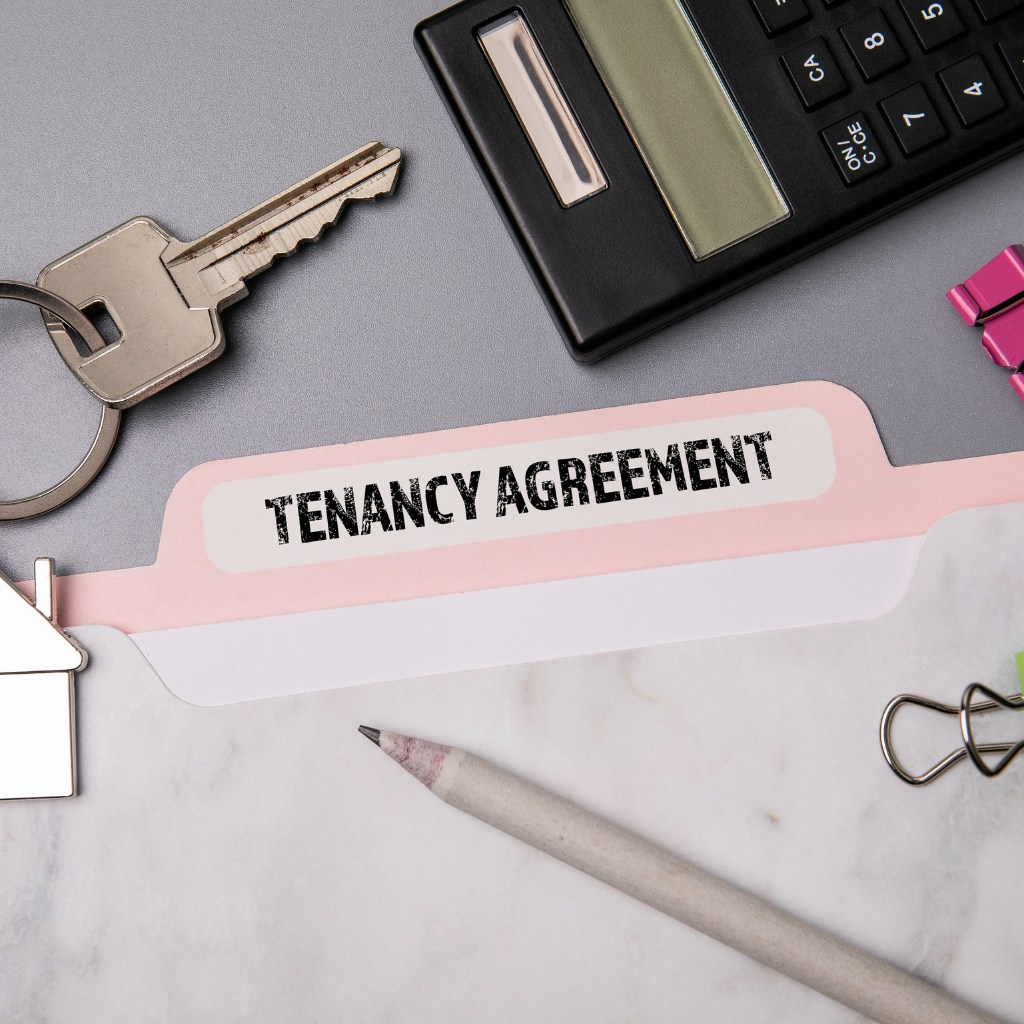Comprehensive Guide to TDS – Key Questions Answered

The UK rental market has transformed significantly in recent years, with the Tenancy Deposit Scheme (TDS) playing a crucial role in ensuring fairness and transparency for both landlords and tenants. From safeguarding deposits to providing structured dispute resolution processes, the TDS is an essential part of modern tenancy agreements.
This tenancy deposit scheme (TDS) guide breaks down everything you need to know about the TDS, from its purpose and legal framework to best practices for avoiding disputes and fostering positive landlord-tenant relationships.
What is TDS in Tenancy? An In-Depth Explanation
The Tenancy Deposit Scheme (TDS) is a government-backed initiative designed to protect tenants’ deposits in Assured Shorthold Tenancies (ASTs). Its primary purpose is to safeguard deposits and facilitate the resolution of disputes between landlords and tenants.
When tenants rent a house, they usually give a deposit to the landlord. The Tenancy Deposit Scheme ensures that money is protected, so a landlord can’t just keep it without a good reason, and tenants get it back if they follow the rules of the rental.
There are two main types of TDS:
- Custodial Scheme: The landlord or agent transfers the deposit to the scheme, which holds it for the duration of the tenancy. At the end of the tenancy, the scheme returns the deposit to the tenant, provided there are no disputes.
- Insurance-Backed Scheme: The landlord or agent retains the deposit and pays a fee to the scheme for insurance. If a dispute arises and the landlord fails to return the deposit, the scheme’s insurance will cover the tenant’s claim.
Under the Housing Act 2004, landlords are legally required to protect tenants’ deposits in a TDS within 30 days of receipt. Failure to do so can result in penalties and restrictions on regaining possession of the property.
Who Pays for the Tenancy Deposit Scheme?
The Tenancy Deposit Scheme (TDS) ensures tenants’ deposits are safeguarded, and landlords are responsible for covering its costs. While this may seem like an added expense, the benefits of compliance far outweigh the financial implications.
- Responsibility for Fees:
Landlords typically bear the cost of using a TDS, which varies depending on the type of scheme chosen. Custodial schemes are free to use, as the deposit is held by the scheme provider, while insurance-backed schemes require landlords to pay a fee to keep the deposit themselves. This setup ensures tenants aren’t financially burdened and that the deposit remains protected throughout the tenancy. - Financial Implications for Landlords:
While custodial schemes have no direct costs, insurance-backed schemes involve a small fee for deposit protection. Non-compliance with TDS regulations can be costly, with fines of up to three times the deposit amount and legal complications such as being unable to evict tenants under a Section 21 notice. By complying with TDS regulations, landlords not only avoid penalties but also demonstrate professionalism in managing their properties. - Benefits for Landlords:
Despite the associated costs, using a TDS offers landlords several advantages. It provides a clear and legally backed framework for resolving disputes, saving time and reducing stress.
The added layer of credibility it gives landlords can make their properties more appealing to potential tenants, boosting occupancy rates. Furthermore, compliance ensures legal protection and smooth tenancy management, helping landlords maintain positive relationships with tenants.
How Does the TDS Work?
The Tenancy Deposit Scheme (TDS) is designed to protect tenants’ deposits while offering landlords a structured process for deposit management. Whether through custodial or insurance-backed schemes, the TDS ensures security and fairness throughout the tenancy.
Registering a Deposit with TDS:
Landlords must register the tenant’s deposit with an approved TDS within 30 days of receiving it. This includes providing details such as the tenancy start date, property address, deposit amount and the chosen TDS scheme. Once registered, the landlord must also give the tenant a Prescribed Information document outlining how their deposit is protected.
How TDS Secures Funds:
- In custodial schemes, the deposit is transferred to the TDS provider, who holds it in a secure account until the end of the tenancy.
- For insurance-backed schemes, the landlord keeps the deposit but pays a fee to the scheme. The TDS provider guarantees the deposit’s protection and intervenes if there’s a dispute or failure to return funds.
Documents Needed by Tenants and Landlords:
Both parties should retain key documents for a smooth TDS process. These include the tenancy agreement, inventory reports, proof of deposit payment and any correspondence regarding the deposit. These documents are crucial for resolving disputes or proving compliance with TDS regulations.
Dispute Resolution:
When a tenancy ends, disputes may arise over deductions from the deposit for issues like damage or unpaid rent. The TDS provides a free Alternative Dispute Resolution (ADR) service where landlords and tenants can submit evidence. An impartial adjudicator reviews the case and makes a binding decision on how the deposit should be allocated. This eliminates the need for costly legal action and ensures a fair resolution.
TDS Deposit Return Process: A Tenant’s Guide
At the end of a tenancy, tenants can claim their deposit back through the Tenancy Deposit Scheme (TDS). Understanding the process helps ensure a smooth return and minimises the chances of delays or deductions.
- Claiming the Deposit:
Once the tenancy ends, tenants should formally request the return of their deposit from the landlord or letting agent. The TDS scheme will hold or oversee the deposit until both parties agree on the amount to be returned. To avoid delays, tenants should provide a forwarding address and ensure all required documentation, like the tenancy agreement and inventory, is readily available. - Common Reasons for Deductions:
Deductions from deposits are typically due to:- Unpaid Rent: Any outstanding amounts owed by the tenant.
- Damage to Property: Repairs for damages beyond normal wear and tear.
- Cleaning Costs: Charges for leaving the property in a condition worse than when it was let.
- Missing Items: Replacing items listed in the inventory that are no longer in the property.
- Tenancy deposit refund process
In a custodial TDS, the scheme typically releases the deposit within 10 days of both parties agreeing on the amount. For insurance-backed schemes, landlords are responsible for returning the agreed sum within the same timeframe. If there’s a disagreement, tenants can raise a dispute with the TDS, and the Alternative Dispute Resolution (ADR) service will step in to resolve the issue. - What to Do if Delays Occur:
If a landlord or agent delays returning the deposit without reason, tenants should contact the TDS provider for assistance. Providing clear evidence, such as email correspondence and photos of the property’s condition, strengthens the tenant’s case. Legal action is also an option if the TDS process does not resolve the issue.
Deposit Protection Scheme UK: Legal Framework
In the UK, landlords are legally required to protect tenants’ deposits in a government-approved deposit protection scheme. Understanding the available schemes and their differences can help landlords comply with regulations and choose the best option for their needs.
- Government-Approved Deposit Protection Schemes:
- Tenancy Deposit Scheme (TDS):
TDS offers both custodial and insurance-backed options. It’s ideal for landlords seeking flexibility in how deposits are held. - Deposit Protection Service (DPS):
DPS is the only scheme offering a free custodial option. It securely holds the deposit for landlords and tenants until the end of the tenancy. - MyDeposits:
MyDeposits focuses on insurance-backed schemes, allowing landlords to retain deposits while paying a fee for protection. It’s a popular choice for landlords managing multiple properties.
- Tenancy Deposit Scheme (TDS):
- Differences Between Schemes:
- Cost: Custodial schemes, like DPS, are often free, while insurance-backed schemes, like TDS and MyDeposits, require a fee.
- Flexibility: Insurance-backed schemes allow landlords to retain the deposit, which can be more convenient for managing cash flow.
- Dispute Resolution: All schemes offer free dispute resolution services, but some schemes, like TDS, are known for their user-friendly processes.
- How to Choose the Right Scheme:
Landlords should consider their preferences and property portfolio when selecting a scheme. For those looking to minimise costs, custodial schemes are a great option. If retaining control over the deposit is important, insurance-backed schemes offer a practical solution. Regardless of the choice, compliance with legal requirements is essential to avoid fines and disputes.
Read more about legal considerations for rending out property in this article.
TDS Dispute Resolution: What You Need to Know
Disputes over tenancy deposits can arise when tenants and landlords disagree on deductions for cleaning, damages or unpaid rent. The Tenancy Deposit Scheme (TDS) offers a fair and structured dispute resolution process to help both parties reach an agreement.
When and Why Disputes Occur:
Disputes typically arise at the end of a tenancy due to:
- Cleaning: If the property isn’t returned in the condition documented in the check-in inventory, deductions may be disputed.
- Damages: Tenants may contest deductions for damages they believe are due to normal wear and tear.
- Unpaid Rent: Disagreements may occur over outstanding rental payments or unclear communication regarding final rent amounts.
These situations often happen when expectations aren’t clearly set at the beginning of the tenancy. - Step-by-Step Guide to Submitting Evidence to TDS:
Raise a Dispute: If the tenant and landlord can’t agree on the deposit allocation, either party can raise a dispute with the TDS.
Provide Evidence: Submit supporting documents, such as the tenancy agreement, check-in and check-out inventories, receipts for cleaning or repairs, and photographs of the property’s condition.
Review Process: The TDS appoints an impartial adjudicator who reviews the evidence provided by both parties.
Decision: The adjudicator makes a binding decision on how the deposit will be allocated, typically within 28 days.
This process is free and designed to prevent the need for costly legal action.
Tips for Tenants and Landlords to Prepare a Strong Case:
Tenants:
- Keep a copy of the tenancy agreement and ensure all responsibilities are clearly understood.
- Take dated photographs of the property at the start and end of the tenancy.
- Ensure all rent is paid and documented and the property is cleaned before moving out.
Landlords:
- Create a detailed and signed inventory at check-in and check-out.
- Keep records of communication with the tenant and invoices for any cleaning or repairs.
- Be realistic about wear and tear and avoid excessive deductions.
By staying organised and maintaining clear communication throughout the tenancy, both parties can reduce the likelihood of disputes and navigate the resolution process effectively.
Considering becoming a landlord? Make sure you read these tips first.
Common TDS Misconceptions
The Tenancy Deposit Scheme (TDS) is a vital part of tenancy agreements in the UK, but many misunderstandings surround its purpose and processes. Addressing these misconceptions helps landlords and tenants better navigate their rights and responsibilities.
- “Landlords Don’t Need to Protect Deposits” – Debunked:
Some landlords mistakenly believe they don’t need to protect tenant deposits, particularly for short-term leases or informal agreements. However, under the Housing Act 2004, landlords must protect deposits for Assured Shorthold Tenancies (ASTs) in an approved scheme within 30 days of receipt. Failure to comply can lead to hefty fines and legal restrictions on evictions. Protecting deposits safeguards both landlords and tenants by ensuring fairness and transparency. - “TDS Only Protects Tenants” – Balancing Benefits for Both Parties:
A common myth is that the TDS favours tenants over landlords. In reality, the scheme is designed to benefit both parties equally. Tenants are assured their deposit is secure and won’t be unfairly withheld, while landlords have access to dispute resolution services to justify legitimate claims for deductions. This balance encourages professional conduct and minimises conflicts. - “All Damages Will Forfeit Deposits” – Clarifying Fair Wear and Tear:
Some landlords assume they can deduct from deposits for any damage, while tenants may worry they’ll lose money over minor issues.
The TDS makes a clear distinction between damage and fair wear and tear. Normal wear and tear, such as faded paint or worn carpets, cannot justify deductions. Damages caused by negligence or intentional acts, like broken furniture or large stains, can be claimed. Proper documentation, including check-in and check-out inventories, ensures these judgments are fair.
By understanding and addressing these misconceptions, landlords and tenants can build trust and maintain a smoother rental experience.
Best Practices for Landlords and Tenants
A successful tenancy relies on clear communication, proper documentation, and mutual understanding.
- Landlord Tips: Avoiding Disputes and Ensuring Compliance:
- Create a Detailed Inventory: Conduct a thorough inventory at the start and end of the tenancy, including photographs, to document the property’s condition. Ensure both parties sign the inventory for accountability.
- Use an Approved TDS: Protect the tenant’s deposit in a government-approved scheme within 30 days, as required by law. Provide tenants with Prescribed Information to comply with regulations.
- Maintain the Property: Regularly check and address maintenance issues to keep the property in good condition and avoid tenant dissatisfaction.
- Communicate Promptly: Address tenant queries or concerns quickly to build trust and avoid unnecessary disputes.
- Tenant Tips: Documenting Conditions and Communicating Clearly:
- Inspect the Property at Check-In: Take photos and review the inventory provided by the landlord. Highlight any discrepancies immediately to ensure they’re noted.
- Keep Records: Retain copies of correspondence, receipts for rent payments, and any repair requests. This documentation is vital in case of disputes.
- Follow the Tenancy Agreement: Adhere to agreed terms, such as cleaning, maintenance responsibilities, and notice periods, to avoid potential issues.
- Prepare for Check-Out: Clean the property thoroughly, repair minor damages, and reference the check-in inventory to ensure the property meets expectations upon leaving.
- Importance of Transparency Throughout the Tenancy
Transparency between landlords and tenants is essential for a harmonious tenancy. Both parties should maintain open communication, set clear expectations, and address issues promptly. This approach not only prevents disputes but also fosters trust and goodwill, making the rental process smoother for everyone involved.
Further Reading: Find more answers to FAQs and tenancy deposit rules about TDS in this article.
The Tenancy Deposit Scheme (TDS) is more than a legal requirement. By understanding how the TDS works, adhering to best practices, and addressing common misconceptions, both parties can ensure a smoother rental experience.
Whether you’re a landlord looking to protect your property or a tenant aiming to safeguard your deposit, the TDS offers valuable protections and solutions for resolving disputes effectively. To find out more about investing in your first property, get in touch with our experts.

